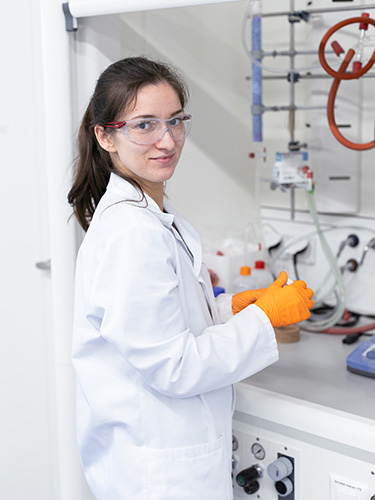Where chemistry meets medicine.
Text: Elizaveta Maksimova, chemist
Even as a child, Elizaveta Maksimova wanted to do something with medicine — today she is developing nanoparticles for targeted cancer therapy.
I’ve had a profound interest in the natural sciences since I was young, and I always knew that I wanted my future career to have something to do with medicine and helping others. Given my introverted personality, however, I never envisioned myself working directly with patients. I found the perfect fit for me in medically oriented research, and I am now a doctoral student in chemistry at the University of Basel.
What does chemistry have to do with medicine? Let me explain: In my research group, we study different types of nanoparticles. These particles are extremely small — less than 5 nanometers in diameter — and can only be observed using powerful electron microscopes. After almost three years of work on my doctorate, preceded by two years of master’s studies on a similar topic, I am still fascinated by the nanoworld. It continues to amaze me how we can not only precisely control the synthesis of these particles but also use them in many important applications.
For example, my project at the PhD School of the Swiss Nanoscience Institute focuses on hafnium oxide nanoparticles. These particles absorb X-rays strongly and are therefore useful as contrast agents for X-ray computed tomography (CT) in diagnosis or as an adjuvant in radiotherapy in order to make cancer cells more sensitive to radiation.
As a chemist, I am trying to find a method for modifying these nanoparticles using specific molecules that can only bind to the cells we want to target. The potential applications for bioconjugates of this kind are endless, with one of the simplest examples being the diagnosis and treatment of cancer.
Imagine if we injected our modified nanoparticles, refitted with cancer-targeting molecules, into the body: All of the nanoparticles would accumulate in the tumor. This would allow us to locate the tumor with the help of CT imaging and apply this information to further treatment!
Of course, our work is still oriented around basic research and is a long way from clinical applications — but I strongly believe that our ideas and discoveries will pave the way for nanoparticles to become useful tools in medicine.
More articles in this issue of UNI NOVA (May 2025).

